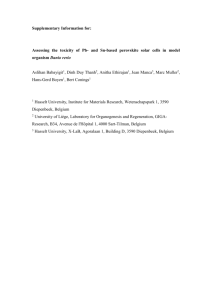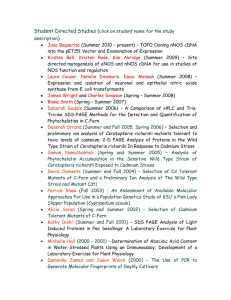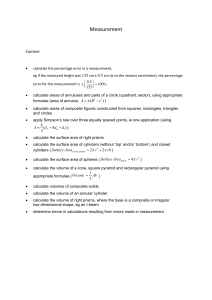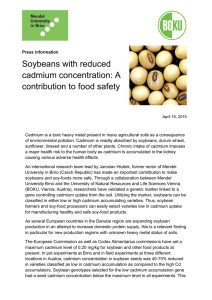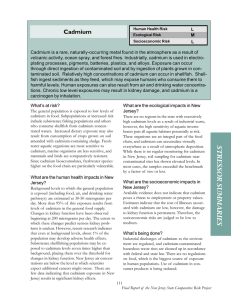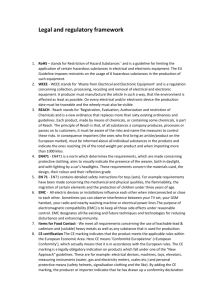Synthesis of Cadmium Sulfide Rod-bundle Structures Decorated
advertisement
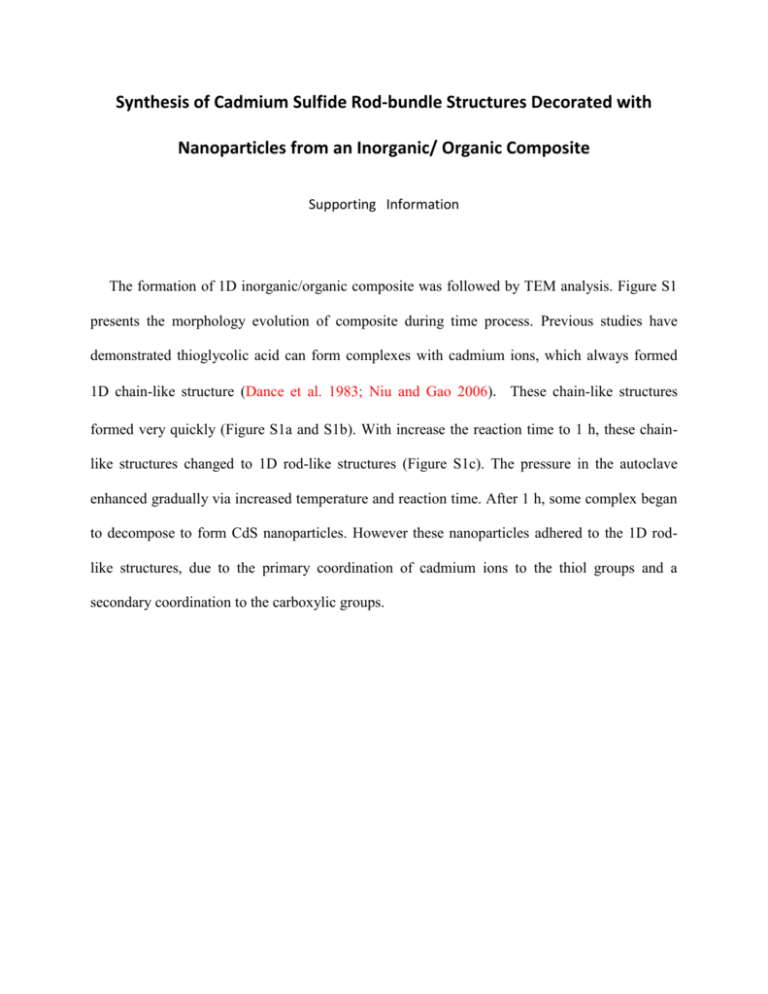
Synthesis of Cadmium Sulfide Rod-bundle Structures Decorated with Nanoparticles from an Inorganic/ Organic Composite Supporting Information The formation of 1D inorganic/organic composite was followed by TEM analysis. Figure S1 presents the morphology evolution of composite during time process. Previous studies have demonstrated thioglycolic acid can form complexes with cadmium ions, which always formed 1D chain-like structure (Dance et al. 1983; Niu and Gao 2006). These chain-like structures formed very quickly (Figure S1a and S1b). With increase the reaction time to 1 h, these chainlike structures changed to 1D rod-like structures (Figure S1c). The pressure in the autoclave enhanced gradually via increased temperature and reaction time. After 1 h, some complex began to decompose to form CdS nanoparticles. However these nanoparticles adhered to the 1D rodlike structures, due to the primary coordination of cadmium ions to the thiol groups and a secondary coordination to the carboxylic groups. Figure S1. CdS/Cd-TGA compositees formed after reaction for a) 15 min, b) 30 min, c) 1 h, d) 3 h, respectively. The components of the composite are further characterized by the X-ray photoelectron spectroscopy (XPS) technique, as indicated in Figure S2. Figure S2a-b show the full XPS spectrum and high-resolution spectra of Cd 3d and S 2p, respectively. From the Figure, the binding energies of Cd 3d5/2 and S 2p3/2 are identified at 405.25 and 162.7 eV, respectively, which is consistent with the reported values in the literature and further confirms CdS existed in the composite (Murray et al. 1993). Also, the ionic valence of Cd and S elements can be assumed as +2 and -2, respectively. 70000 7000 Cd3d5 60000 S2p 50000 Cd Relative Intensity Relative Intensity 6000 40000 30000 20000 5000 4000 3000 10000 0 400 402 404 406 408 410 412 414 416 418 420 422 Binding energy (eV) 2000 155 160 165 170 175 180 Binding energy (eV) Figure S2. X-ray photoelectron spectroscopy (XPS) of the composite: (a) Cd 3d, (b) S 2p. References Dance IG, Scudder ML et al (1983) Cadmium thiolates. Tetrahedral CdS4 and dodecahedral CdS4O4 coordination in catena-bis(carbethoxymethanethiolato) cadmium(II). Inorg Chem 22: 1794-1798. Murray CB, Norris DJ et al (1993) Synthesis and characterization of nearly monodisperse CdE (E = sulfur, selenium, tellurium) semiconductor nanocrystallites. J Am Chem Soc 115:8706-8715. Niu HJ, Gao MY (2006) Diameter-Tunable CdTe Nanotubes Templated by 1D Nanowires of Cadmium Thiolate Polymer. Angew Chem Int Ed 45: 6462-6466.
